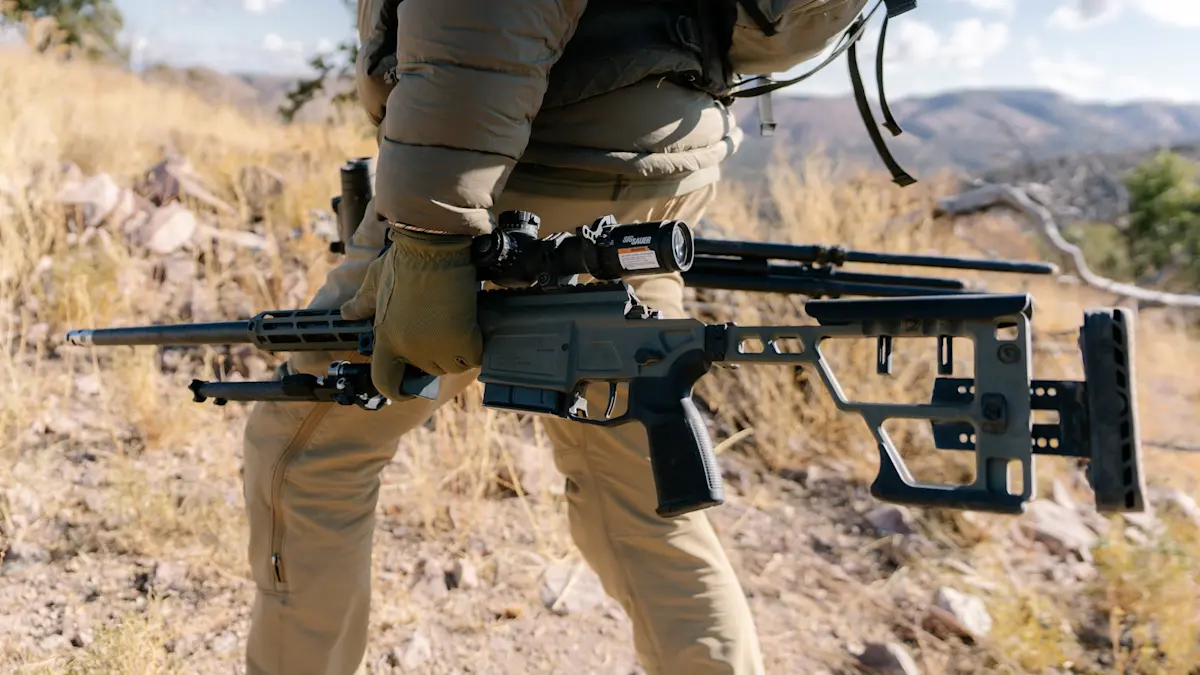Do You Really Need a Scope that Costs as Much as Your Rifle?

By Jordan Sillars – MeatEater
If you’ve spent much time on the Gun-ternet, you’ve no doubt come across this advice, or something close to it.
“Make sure you spend as much on your scope as your rifle.”
“Your scope should cost at least double what your rifle does!”
“Put that scope on credit. Second mortgage rates are great these days. Also, your kid isn’t getting into college anyway.”
It may be true that your kid isn’t getting into college, but do you really need to spend his would-be tuition money on an optic for your rifle?
I’m here to tell you that the answer is, “No.” At least, not exactly.
Cheap vs. Expensive Optics
If there’s one thing I preach to rifle hunters, it’s that you should match your gear to your needs in the field–not the needs of a gun writer or forum warrior. The same is true of your optic.
To do that, it’s helpful to know what you’re getting when you put down cash on a rifle scope. I remember when I was a new hunter, I was baffled by the range of prices on the market. You can pay $50 for a 6-24x scope on Amazon, or you can pay $3,100 for a 5-25x Nightforce. Both have similar magnification range, and the Amazon scope even comes with rings and an illuminated reticle! Why is the Nightforce 62 times more expensive?
The first reason expensive scopes are expensive is that they’re durable. Just like a car can be made with cheap or expensive internal components, scopes can be made with plastic or metal parts that significantly impact their durability.
As MeatEater’s Garrett Long puts it in his article, “Best Hunting Scopes,” “To say the Nightforce is durable is like saying Steven Rinella likes mule deer.” Nightforce has earned a special reputation for durability, but the same could be said for any of the high-end scopes from Sig Sauer, Vortex, or Leupold. You might put down more money for a scope because you want to have peace of mind that, if you take a tumble in the woods, the scope will still be zeroed.
Those internal components affect more than just durability. Scope “tracking” is an optic’s ability to move the reticle exactly as much as the turret indicates. If a scope has poor tracking, you might dial 2 MOA “up” but the reticle only moves 1.75 MOA “up.” As distances increase, that can turn a vital shot into a clean miss or, worse, a wounded animal.
The final reason expensive scopes are expensive is because they offer better light transmission and clarity. This is especially obvious when peering at small objects at long distances or during lowlight conditions. The clearer an optic is and the more light it transmits, the easier it will be to count the points on a mule deer in the minutes before shooting light is over.
If you’re skeptical of this, check out Adam Moore’s rundown of the best scopes under $500. Adam is MeatEater’s Gear Editor, and he’s tested and reviewed dozens of scopes both for us and for other outdoor publications you would recognize.
For his review of budget-friendly scopes, Adam used each optic to look at the same object in the minutes after the sun went down. While the views through those scopes appeared similar in the daylight, some of them performed obviously better at dusk. That’s why you might spend more than $60 for a scope, even if you can’t lay down for a Nightforce.
“If you look through a $200 scope and a $2000 scope in the middle of the day, you might not be able to tell the difference,” Adam said. “But during that last 15 minutes of legal shooting, your resolution will be noticeably different, which will allow you to pick up details and identify target animals. Those higher-end scopes will also have edge to edge clarity, even near their max magnification ranges.” CLICK HERE TO READ FULL POST
Discover more from HuntingOfficer
Subscribe to get the latest posts sent to your email.
